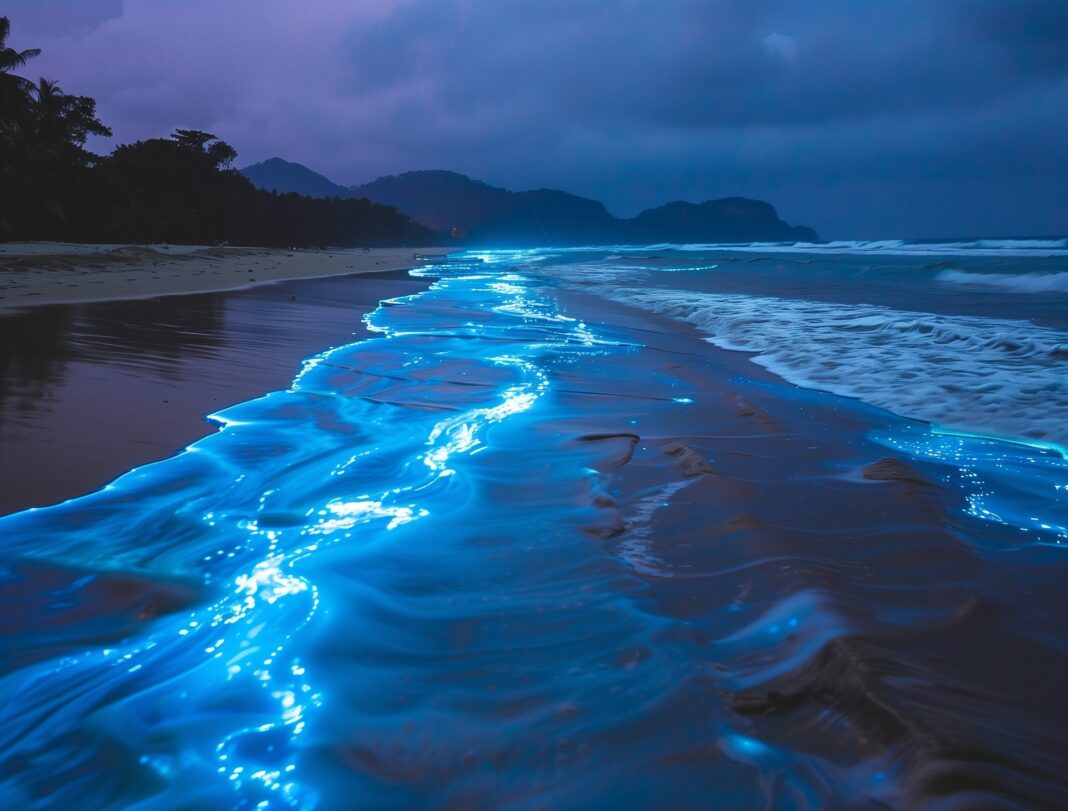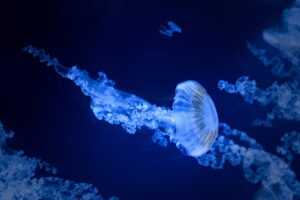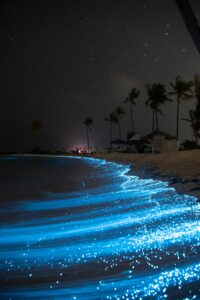Have you ever looked at the northern lights and felt mesmerized by the iridescent beauty? Or perhaps you looked at the glowing moon on a clear night and wondered how? Nature has many mysteries that have an ethereal presence in the world around us. These natural attractions and surreal scenes add a glow to the world and help us understand the science of the earth.
As some of us may already know, the fascinations of the oceans are far beyond the surface water. The ocean is a huge part of the world and within every body of water, we can find something new and unique. One of the rare beauties of the ocean is seen in Bioluminescent Bays. You may have heard of Mosquito Bay in Puerto Rico, Jervis Bay in Australia, or the Luminous Lagoon in Jamaica. Believe it or not, there are only around 35 Bioluminescent Bays in the world! Unlike other bodies of water, these bays appear with a glowing blue light every night, which resembles a dream. After understanding this natural phenomenon, the question then comes to our minds of how?
Well, the beauty of blue glowing lights comes from the magical sea organisms called dinoflagellates. These eukaryotic planktons create chemical reactions through photosynthesis, which allows them to produce a bioluminescence effect. Many scientists classify these species as both animals and plants. This is because of their ability to absorb chlorophyll to create food while also being able to move around like animals. Dinoflagellates release the light when they feel “agitated” (a sense of nervousness) from the water around them. The vast quantity of these organisms in the ocean come together to form a strong bright light that makes a severe difference in the environment around them.
Why are Bioluminescent Bays across the world different?
While most of the oceans contain Dinoflagellates, the cause of its bioluminescence varies depending on the location. For instance, Mosquito Bay in Puerto Rico was given the Guinness World Records as the brightest bioluminescent bay in the world in 2006. The reason was that the dinoflagellates were in much larger quantities in that specific water, hence making the water extremely bright blue. Conversely, other glowing waters may be known for other species. Tomaya Bay, for example, is known for its bioluminescent firefly squids and jellyfish! Research shows that some of these organisms obtain the bioluminescence naturally while other aquatic life feeds on bioluminescent creatures, which then passes on to them.
Interesting Facts:
- Many say that Dinoflagellates create light as a defence adaptation. They use the bright lights to scare predators away or shift the attention of predators toward other predators who are eating these microorganisms.
- While the lights may seem uninterrupted, the organisms are flashing these lights at an incredibly fast speed (nearly 1/10 of a second)
- There are roughly 700,000 Dinoflagellates Per Gallon of Water in Puerto Rico’s Mosquito Bay!!!
- Bioluminescent organisms can also glow in colours apart from the typical Green-blue (e.g. railroad worms)
Robert Charley, a microbiology PhD, describes the science of this natural phenomenon with, “The most incredible thing to me is to think that when you see a shimmering bay or witness bioluminescence yourself by swimming or standing in the shallow water, is that it is the result of billions of these microorganisms producing an enzyme-driven reaction.”
This statement briefly touches on the complex and in-depth science behind bioluminescence, particularly in organisms. The purpose of this article was to introduce one of the thousands of mysteries that the ocean holds. If you would like to learn more about these Bioluminescent creatures, you can read this national geographic article (click here.)
Sources:




Thank You!
Comments are closed.